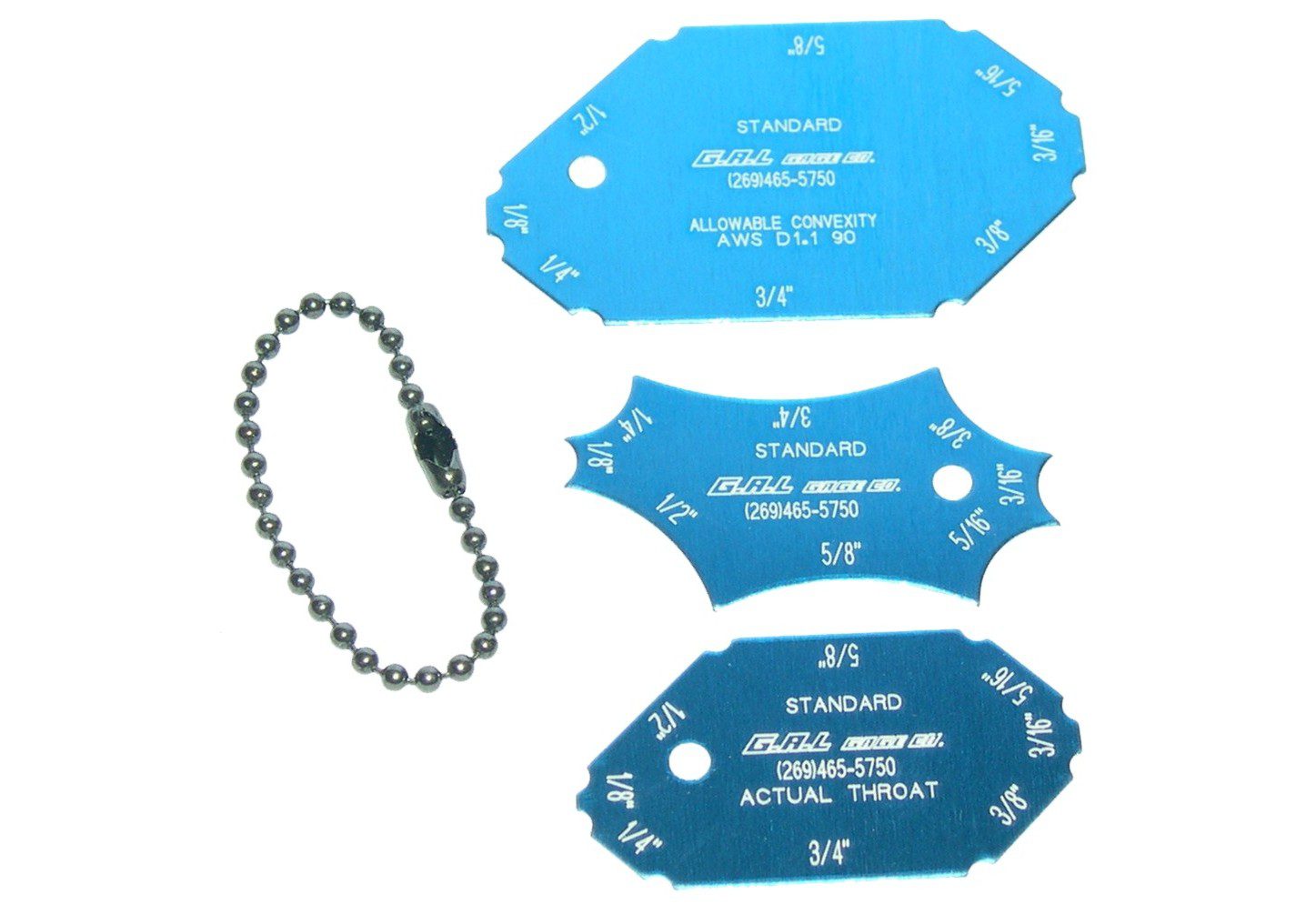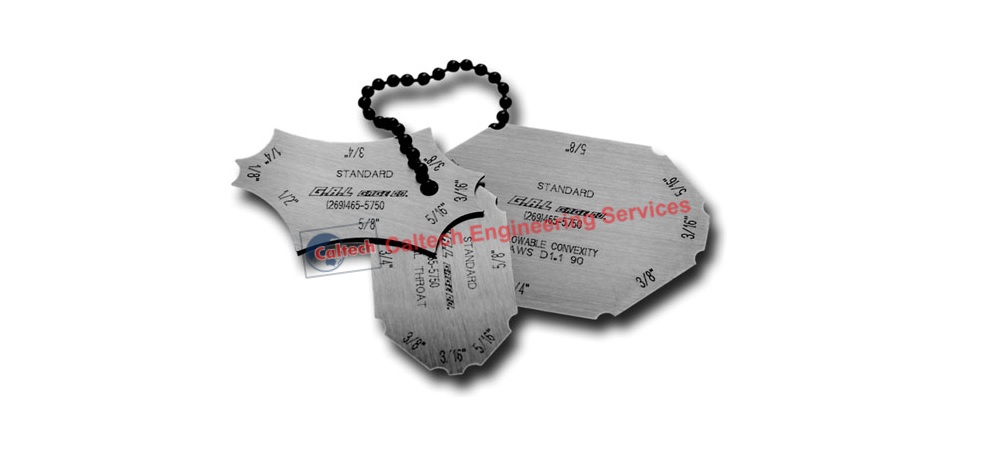Ingenious Strategies to Fillet Weld Evaluation and Testing: Enhancing Weld High Quality and Conformity Standards
In the realm of welding, the quality and honesty of fillet welds play an essential function in making certain the architectural soundness and dependability of various commercial elements. With the constant drive for boosted efficiency and conformity with rigid requirements, the exploration of cutting-edge techniques to fillet weld evaluation and testing has actually become imperative.
Advanced Non-Destructive Screening Methods
Making use of state-of-the-art modern technologies, advanced non-destructive screening techniques play an essential duty in guaranteeing the integrity and high quality of fillet welds. These methods, such as phased variety ultrasonic screening (PAUT) and magnetic bit screening (MPT), offer in-depth understandings into the weld's inner structure without triggering any kind of damage to the material. PAUT, for example, utilizes several ultrasonic components to inspect the weld from different angles, giving an extensive visualization of possible defects like lack of combination or splits.
Similarly, MPT is efficient in detecting surface-breaking problems by using an electromagnetic field and iron particles to the weld area. This approach is especially useful for determining stoppages that may compromise the weld's toughness. By utilizing these advanced non-destructive testing techniques, weld inspectors can precisely examine the top quality of fillet welds, ensuring compliance with industry standards and regulations. The capacity to spot defects beforehand not just boosts weld top quality yet additionally prevents costly rework or failures in structural integrity, underlining the value of these cutting-edge screening approaches in welding inspections.
Robotics and Automation in Inspection

The integration of robotics and automation has revolutionized the examination procedure for fillet welds, enhancing performance and precision in quality analysis. Robotics use accurate control and repeatability in inspecting welds, making certain constant and dependable results. Automated systems can be set to follow details evaluation courses, guaranteeing comprehensive insurance coverage of welds and decreasing the threat of human error.
Robotic examination systems equipped with sophisticated sensing units can identify and measure weld functions with high accuracy, supplying thorough data for analysis. These systems can determine flaws such as splits, absence of fusion, and porosity, enabling timely restorative activities to be taken. In addition, robotics and automation permit real-time information collection and evaluation, providing immediate comments to drivers and assisting in quick decision-making procedures.
Moreover, making use of robotics and automation in fillet weld examination boosts general efficiency by lowering inspection times and raising inspection throughput. By streamlining the inspection process, manufacturers can ensure weld quality and compliance standards are fulfilled successfully, inevitably causing set you back savings and enhanced product top quality.
Making Use Of Artificial Knowledge for Analysis
Fabricated knowledge plays a critical role in improving the efficiency and accuracy of evaluation in fillet weld inspection procedures. AI algorithms can quickly process huge quantities of data from weld examinations, finding defects or incongruities that may be challenging to recognize with the nude eye.
Moreover, AI systems can pick up a fantastic read from previous inspection data, consistently improving their ability to determine possible issues and discrepancies in fillet welds. This adaptive discovering capacity enhances the general high quality control process, minimizing the chance of human mistake and guaranteeing that welds fulfill the called for requirements. By incorporating synthetic knowledge into fillet weld evaluation, industries can achieve higher levels of efficiency, consistency, and compliance in their evaluation methods.
Portable Equipment for On-Site Assessment
Enhancing area assessment effectiveness, the fostering of portable tools transforms on-site evaluation processes for fillet welds. These tools supply adaptability and ease, permitting assessors to perform detailed exams in numerous areas, including remote or challenging atmospheres. Mobile tools such as ultrasonic testing devices, magnetic fragment assessment devices, and digital radiography systems provide real-time information and high-resolution imaging capacities, allowing quick decision-making and prompt responses on weld high quality.
One significant benefit of mobile tools is their capacity to simplify inspection treatments, minimizing downtime and boosting total efficiency - Gauge Fillet Weld. Examiners can quickly transport these tools to different work sites, eliminating the requirement for carrying heavy equipment or components to off-site centers. Additionally, the transportability of these tools advertises cost-effectiveness by lessening transportation expenditures and speeding up inspection timelines
In addition, the use of mobile tools for on-site examination promotes aggressive quality assurance actions, as examiners can without delay determine and resolve any type of possible welding defects or inconsistencies. By incorporating these ingenious modern technologies into on-site examination practices, welding experts can ensure compliance with sector standards and improve weld top quality, ultimately causing boosted structural stability and safety and security in numerous welding applications.
Integration of Data Monitoring Equipment

Having maximized on-site evaluation procedures via the application of portable tools, the next phase includes the smooth combination of information monitoring systems to even more enhance performance and data evaluation abilities in his comment is here fillet weld inspection and screening. By integrating information monitoring systems into the examination process, companies can improve information collection, storage, and evaluation. This integration permits real-time monitoring of weld quality, instant recognition of problems, and punctual decision-making to rectify any type of click this issues that may arise throughout the inspection process.
The combination of data management systems enables smooth interaction between different stakeholders entailed in the examination procedure, fostering collaboration and boosting overall high quality control steps. Ultimately, the assimilation of information management systems offers to elevate the criteria of fillet weld examination and testing, ensuring compliance with industry laws and improving weld high quality.
Conclusion
Finally, ingenious methods to fillet weld examination and testing have significantly boosted weld high quality and conformity requirements. Advanced non-destructive testing techniques, robotics, automation, expert system, portable devices, and data monitoring systems have changed the method weld inspections are carried out. By utilizing these innovations, sectors can guarantee that welds satisfy the required high quality criteria and policies, inevitably improving general performance and security in welding procedures.
Having optimized on-site inspection procedures via the use of portable devices, the following phase involves the seamless assimilation of data management systems to further boost efficiency and data analysis capacities in fillet weld assessment and screening. Eventually, the combination of information monitoring systems offers to elevate the requirements of fillet weld inspection and testing, making sure compliance with sector guidelines and improving weld high quality.
